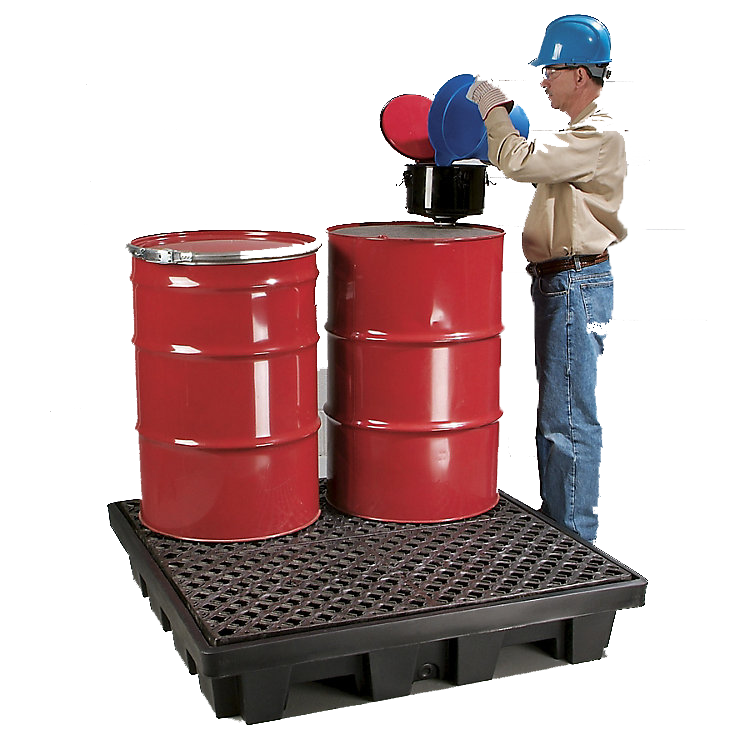WATERPROOFING BASEMENTS WITH POLYUREA COATINGS
Cracks in concrete are an easy way for water to get into the basement.
Well, when that small crack becomes something bigger and your basement is letting in more than just a little water each time it rains, then it's time to take action.
First, we will discuss the differing types of basement walls and then we will go through a step by step explanation of how you can fix these problems with the help of polyurea.
Concrete block walls
These will leak just like poured concrete walls. Leakage can also occur at mortar joints between concrete blocks. The mortar joints can be weakened if pressure is applied to a concrete block foundation. This can cause cracks that permit water seepage.
Concrete blocks' hollow cores can also be filled with water, which in turn will cause the foundation leakage after the soil has dried.
Clay tile walls
These walls can be found in historic homes. The most likely place for a leak to occur is at the floor/wall junction. Seepage is also common at mortar joints between clay tiles.
Clay tiles have hollow cores similar to concrete blocks that can be filled with water. This can lead to a water reservoir that can leak into your basement.
Clay tile can be fragile and easily damaged, so it is important to take extra care when building this type of wall.
Basement waterproofing might seem daunting but...
It might not be as difficult as you think. A polyurea coating can be your first-line defense against damp basements. It is easy to apply and takes only a few steps. Read on to learn what these steps are.
Step 1. Prepare the surface.
This is the first step to ensure you get the best coating results. Before you begin any talks about waterproofing basements, make sure that you have read the label instructions.
First, test the patch in an area that isn't visible. This will allow you to determine if the product is adhesion- and drying-proper.
You must clean and dry the wall surface. You can sand any rough surfaces of wood and remove peeling or missing paint using a wire brush.
You can prepare concrete surfaces by using a carborundum disc and a disc grinder.
Repair concrete that is crumbling or loose and let it cure. You will need to power wash concrete if it has mildew. If it is new concrete, let it cure for at most 30 days before you apply a coating.
Step 2. Prime the surface and fill in any cracks. Then, apply seam tape.
Fill any cracks or joints that are larger than 1/8 inches with a trowel-grade coating and filler. You will need to seam tape cracks and joints to prevent future cracking or leaking. You can shape it with your fingers by using contouring seam tape, which is self-adhesive and high-strength.
It is almost impossible to remove seam tape once it has been placed on a primed surface. Prime all surfaces prior to applying seam tape for best adhesion.
Do not use asphalt sealers in place of them. Asphalt sealers don't waterproof. Asphalt floats on damp surfaces.
Before you start, make sure to cover sensitive areas.
It is absolutely essential to dry the basement walls completely before you begin. A propane space heater can be used or you can rent or buy a construction heater.
Allow for adequate ventilation once everything has drained. Basements that are damp cannot be waterproofed.
Keep in mind, however, that high humidity and low temperatures may result in a longer drying or curing period.
Step 3. Application - Regular and heavy duty
The Marvel polyurea coating will be applied. Follow the instructions carefully to ensure the correct mixing of the chemicals.
The coating should be applied until the surface is smooth and has a thickness of at least 30mil. This is about the thickness of one dime.
Two coats of polyurea waterproofing will be sufficient to cover all surfaces in your basement. However, it is better to have more. This is especially true if your basement is prone to water leakage.
Step 4. Secure cleanup, storage, disposal
Water can be used to clean up small spillages and tools. You can store any unopened product in the original container. It should be kept at 45-85 degrees.
Any item that is being disposed of should comply with all state, federal and local regulations; thin it with water until 10%










